Boost Your Wi-Fi: Simple Steps to a Stronger Signal
Whether it’s for work, online learning, gaming, or streaming your favorite shows, a strong Wi-Fi signal ensures a smooth and seamless online experience. But, what if your Wi-Fi isn’t up to the mark? Issues like slow internet speeds and dead zones can transform your digital haven into a frustrating ordeal.
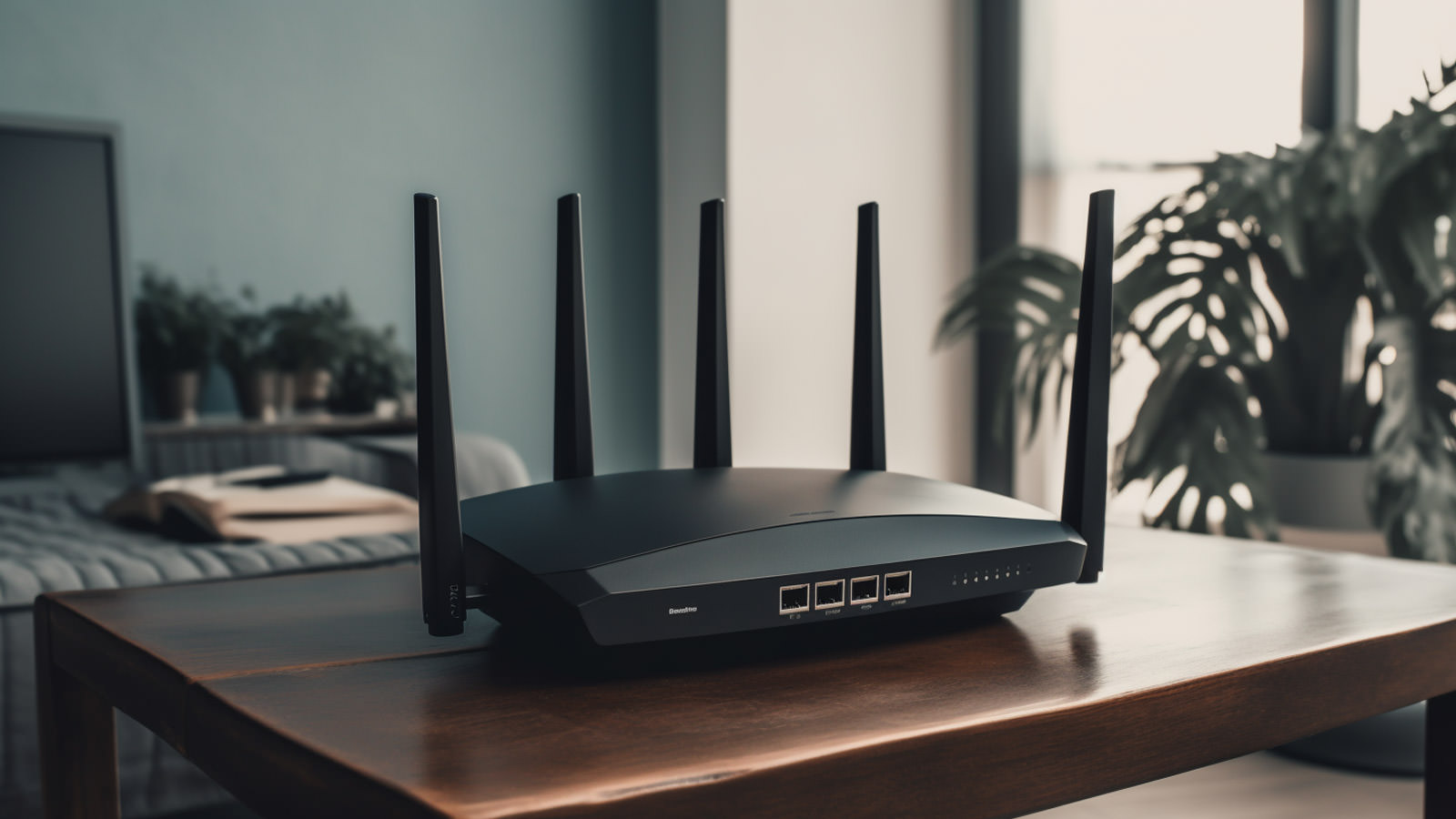
In this guide, we will explore practical and effective ways to boost your home Wi-Fi signal. From correctly positioning your router to upgrading your equipment, these simple yet impactful steps can significantly enhance your Wi-Fi performance.
1. Position Your Router Properly
The placement of your router significantly influences the strength and reliability of your Wi-Fi signal. Here are some tips to optimize your router’s position.
Central Location
Wi-Fi signals spread out in all directions from the router. Hence, placing your router in a central location in your home ensures that the signal reaches as many areas as possible.

For instance, if your home is two stories, consider positioning the router on the first floor near the middle of the house, allowing the signal to reach both the upper and lower floors.
Elevated Position
Wi-Fi signals tend to spread out and down from the router. Thus, placing your router in an elevated position, like a high shelf or mounting it on a wall, can extend the signal’s reach.
For example, if your router is currently on the floor, consider moving it to a high shelf.
Away from Obstructions
Walls, furniture, and other physical obstructions can weaken your Wi-Fi signal. Aim to position your router in an open space where the signal won’t be blocked. Avoid placing your router inside obstructive locations, such as a cabinet or closet.
Away from Interference
Other electronic devices can cause interference with your Wi-Fi signal. Make an effort to keep your router distanced from devices like microwaves, cordless phones, baby monitors, and Bluetooth devices.
For example, if your router is currently next to your microwave in the kitchen, it would be beneficial to move it to a different room.
Away from Metal Objects
Metal objects can reflect Wi-Fi signals and cause interference. If your router is situated near a large metal object like a filing cabinet or refrigerator, it would be beneficial to relocate it to a different location.
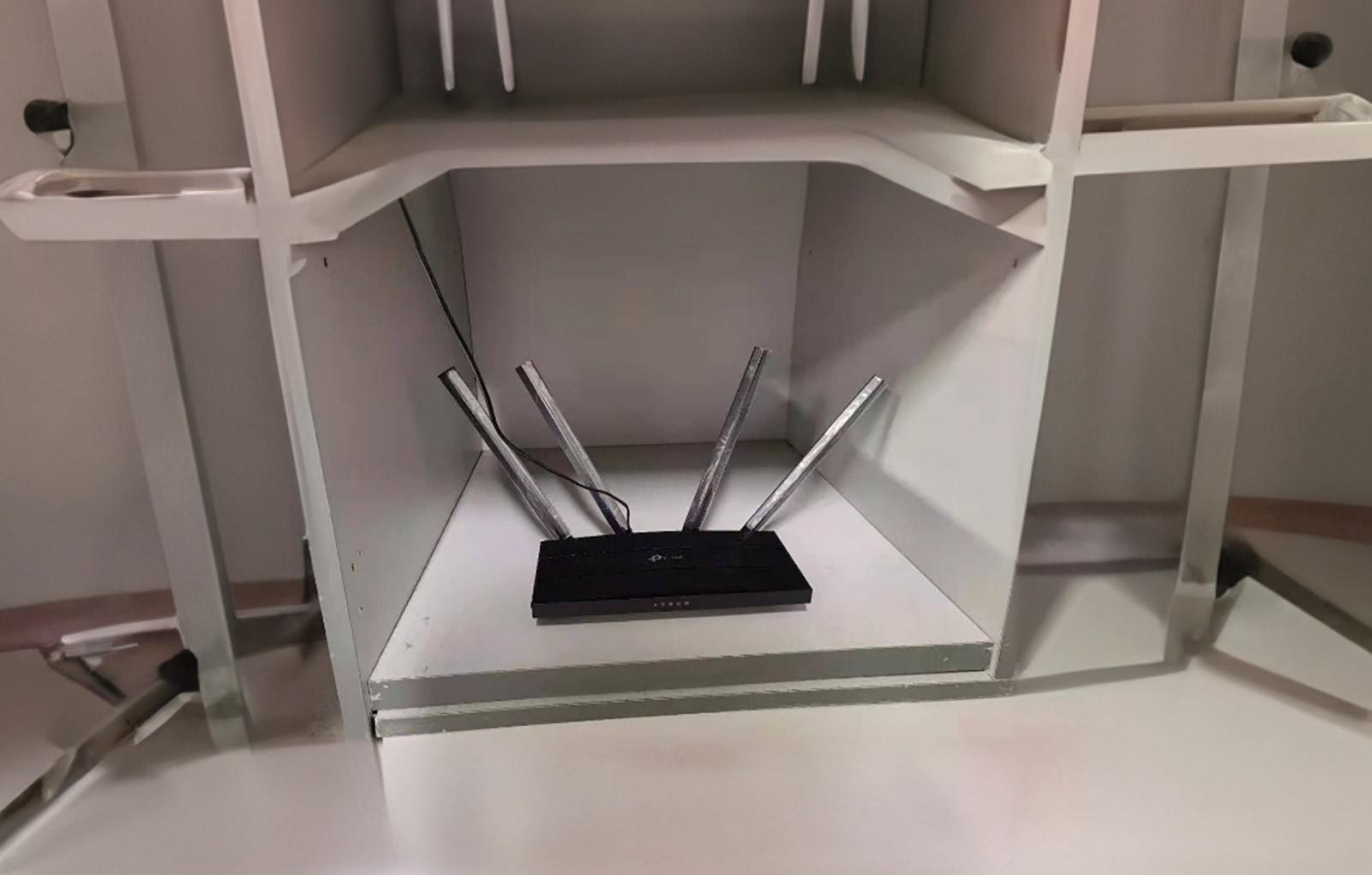
2. Update Your Router’s Firmware
Firmware is the software that is embedded in your router. It controls the device functions and provides the means for your router to connect to the internet. Manufacturers often release firmware updates that can improve the performance and reliability of your router, add new features, and fix security vulnerabilities.
Here’s how you can update your router’s firmware:
Identify Your Router’s Model and Version
You’ll need to know the exact model and version of your router to find the correct firmware. This information is usually printed on the router itself, often on a sticker on the bottom or back of the device.
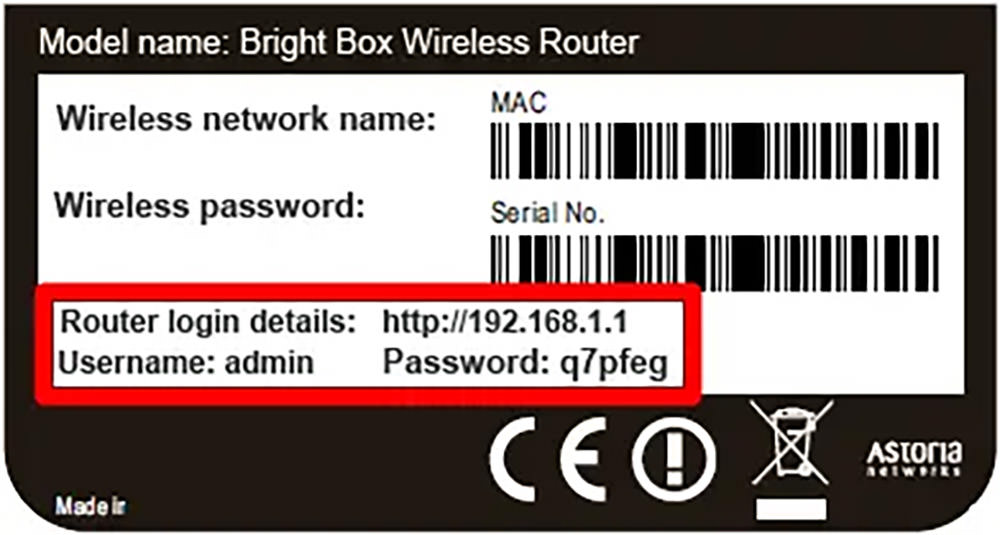
Visit the Manufacturer’s Website
Once you have your router’s model and version, go to the manufacturer’s website. Look for a section like “Support” or “Downloads“.
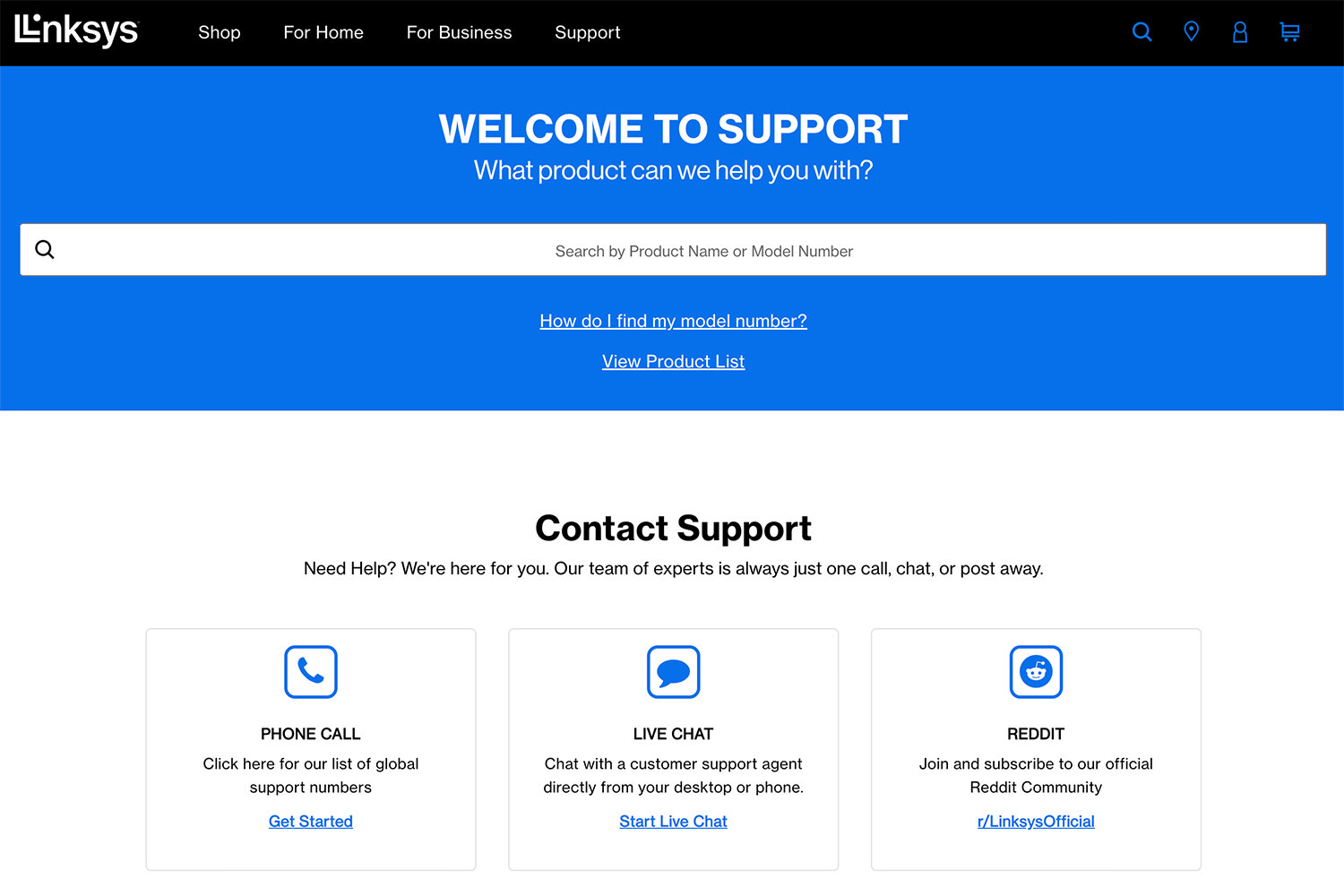
Here are some common router manufacturers with links to their support and download page.
Find the Firmware
On the manufacturer’s website, look for your router’s model and version. There should be a section for firmware updates. Make sure you download the correct firmware for your specific model and version.
Update the Firmware
The process for updating the firmware will vary depending on the router. Usually, you will need to access the router’s settings by typing the router’s IP address into a web browser on a device connected to the router. Then, you’ll need to find the firmware update section and upload the firmware file you downloaded.
If you have a Netgear router, you would go to the Netgear website and navigate to the “Support” section. From there, you would find your specific router model and download the latest firmware. Then, you would access your router’s settings by typing http://www.routerlogin.net into a web browser, enter your username and password, and navigate to the “Advanced” and then “Administration” section. From there, you can click on “Firmware Update” or “Router Update“, click “Choose File” or “Browse“, select the downloaded firmware file, and finally click on “Upload” to update the firmware.
3. Change the Wi-Fi Channel
Wi-Fi signals operate on various channels. Your router communicates with the devices in your home using a specific channel. If multiple devices or networks use the same channel, it can result in congestion, subsequently slowing down your Wi-Fi. Changing the channel your router uses can alleviate this congestion.
Here’s how to change your Wi-Fi channel:
Identify the Best Channel
To begin with, you need to identify the optimal channel for use. Various apps and tools can analyze the Wi-Fi channels in use in your vicinity and recommend the most suitable one. For instance, Wi-Fi Analyzer is a well-known app for Android devices, capable of accomplishing this task.

Access Your Router’s Settings
To change the channel, you have to access your router’s settings. Typically, this is done by entering the router’s IP address into a web browser on a device connected to the router. The IP address is often imprinted on the router itself or can be found in the router’s manual.
Change the Channel
Once inside your router’s settings, navigate to the Wi-Fi settings. There, you’ll find an option to change the channel. Select the channel you previously identified as optimal and save your changes.
If you’re using a Linksys router, access your router’s settings by typing http://192.168.1.1 into a web browser. Following this, enter your username and password. Navigate to the “Wireless” section and then to the “Basic Wireless Settings” section. Here, you can change the “Wireless Channel” to the one you identified as the best one and then click on “Save Settings“.
4. Use a Wi-Fi Extender or Mesh System
A Wi-Fi extender (also known as a Wi-Fi booster or repeater) is a device that can boost the Wi-Fi signal from your router into areas of your home that the router can’t reach.
A mesh system, on the other hand, uses multiple routers (often called nodes) to create a network that covers your entire home.
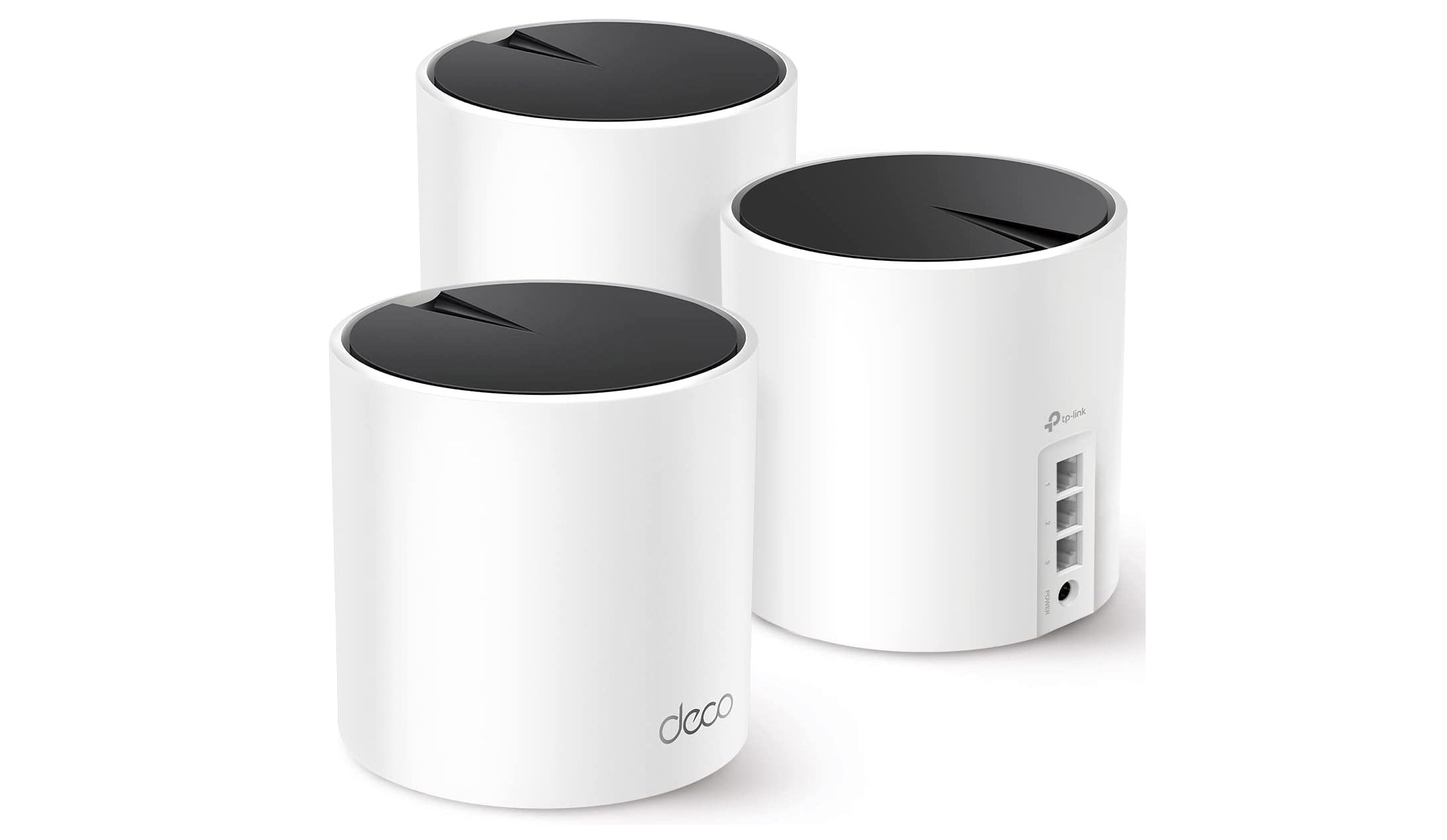
Here’s how you can use these devices to boost your Wi-Fi signal:
Wi-Fi Extender
First, identify the areas in your home where the Wi-Fi signal is weak. Then, place the Wi-Fi extender halfway between your router and the weak signal area. The extender will pick up the signal from your router and rebroadcast it, boosting the signal into the weak area.

For example, if your router is in the living room and the Wi-Fi signal is weak in your bedroom, you could place the extender in the hallway between these two rooms.
Mesh System
A mesh system is a more comprehensive solution that can cover larger areas. You place the main node in a central location and connect it to your modem. Then, you place the other nodes around your home. The nodes communicate with each other to create a single, strong Wi-Fi network. For example, if you have a three-story house, you could place one node on each floor.

Both Wi-Fi extenders and mesh systems come with instructions on how to set them up, which usually involves connecting them to your existing network and configuring some settings. Some devices also come with an app that guides you through the setup process and helps you find the best locations to place the devices.
The effectiveness of these devices can vary depending on factors like the size and layout of your home, the quality of your internet service, and the type of router you have.
It’s also worth noting that while these devices can boost your Wi-Fi signal, they can’t increase the speed of your internet service. If your internet service is slow, you might need to upgrade your service plan or switch to a different internet service provider.
5. Upgrade Your Equipment
If your router is old, it might not be able to handle the demands of modern devices and applications. Upgrading to a newer model can significantly improve your Wi-Fi signal and speed.
Identify Your Needs
The first step is to identify your needs:
- How many devices do you have?
- Do you do a lot of streaming or gaming?
- Do you have a large home that needs a wide coverage?
The answers to these questions will help you determine what kind of router you need.
Choose a Router
Once you’ve identified your needs, you can start looking for a router that meets them. If you have a lot of devices and do a lot of streaming or gaming, you might want to look for a dual-band or tri-band router. These routers can handle more devices and offer faster speeds.

And if you have a large home, you might want to consider a mesh system, which can provide better coverage.
Set Up the New Router
Once you’ve chosen a router, you’ll need to set it up. This usually involves connecting it to your modem, turning it on, and then configuring the settings. Most routers come with a quick start guide that will walk you through the process.
Connect Your Devices
After your new router is set up, you’ll need to connect your devices to it. This usually involves selecting the router’s network on your device and entering the password.
For example, if you have a 5-year-old single-band router and you’ve recently started working from home, you might find that your Wi-Fi is slow and unreliable.
Upgrading to a dual-band router can provide a separate network for your work devices, reducing congestion and improving speed and reliability.
The best router for you depends on your specific needs and circumstances. It’s always a good idea to do some research and read reviews before making a purchase.
6. Secure Your Wi-Fi
Securing your Wi-Fi network is crucial for your privacy, safety, and maintaining a good internet speed.
Change the Default Login
Routers come with a default username and password that are often easy to guess. Changing these is one of the first things you should do when setting up your router.
Enable WPA3 Encryption
Wi-Fi Protected Access (WPA) is a security protocol that encrypts the data on your network. WPA3 is the latest and most secure version. Enabling WPA3 can help protect your network from unauthorized access.
Set a Strong Wi-Fi Password
Your Wi-Fi password is another line of defense against unauthorized access. It should be strong and unique.
Disable WPS
Wi-Fi Protected Setup (WPS) is a feature that allows you to connect devices to your network by pressing a button or entering a PIN. However, it can be a security risk because it’s easy to guess the PIN. Disabling WPS can help make your network more secure.
Create a Guest Network
If you often have guests who use your Wi-Fi, consider creating a guest network. This is a separate network that allows your guests to connect to the internet without giving them access to your main network.

The steps to perform these actions can vary depending on the router. You’ll need to access your router’s settings, which is usually done by typing the router’s IP address into a web browser on a device connected to the router.
7. Use a Wired Connection
While Wi-Fi is convenient, it can also be slower and less reliable than a wired connection. Devices that require a lot of bandwidth, such as gaming consoles or streaming devices, can benefit from being connected directly to the router with an Ethernet cable.
Identify Devices
First, identify which devices might benefit from a wired connection. These are typically devices that use a lot of data or need a very stable connection. Examples might include gaming consoles, smart TVs, desktop computers, or streaming devices like a Roku or Amazon Fire Stick.
Get an Ethernet Cable
You’ll need an Ethernet cable to connect your device to the router. These cables come in different lengths, so make sure to get one that’s long enough to reach from your router to your device.
Connect the Device
Plug one end of the Ethernet cable into a free port on the back of your router, and plug the other end into the Ethernet port on your device. This would provide a more stable and faster connection than Wi-Fi, which can be beneficial for online gaming.
Remember: Using a wired connection might not be feasible for all devices or in all situations. For example, it might not be practical to run a long Ethernet cable across your home to connect a device in a different room. In such cases, improving your Wi-Fi signal or using a Wi-Fi extender might be a better option.
8. Adjust the Antennas
If your router has external antennas, adjusting them can help optimize your Wi-Fi signal. The antennas send out signals in all directions, so their position can affect where the signal goes.
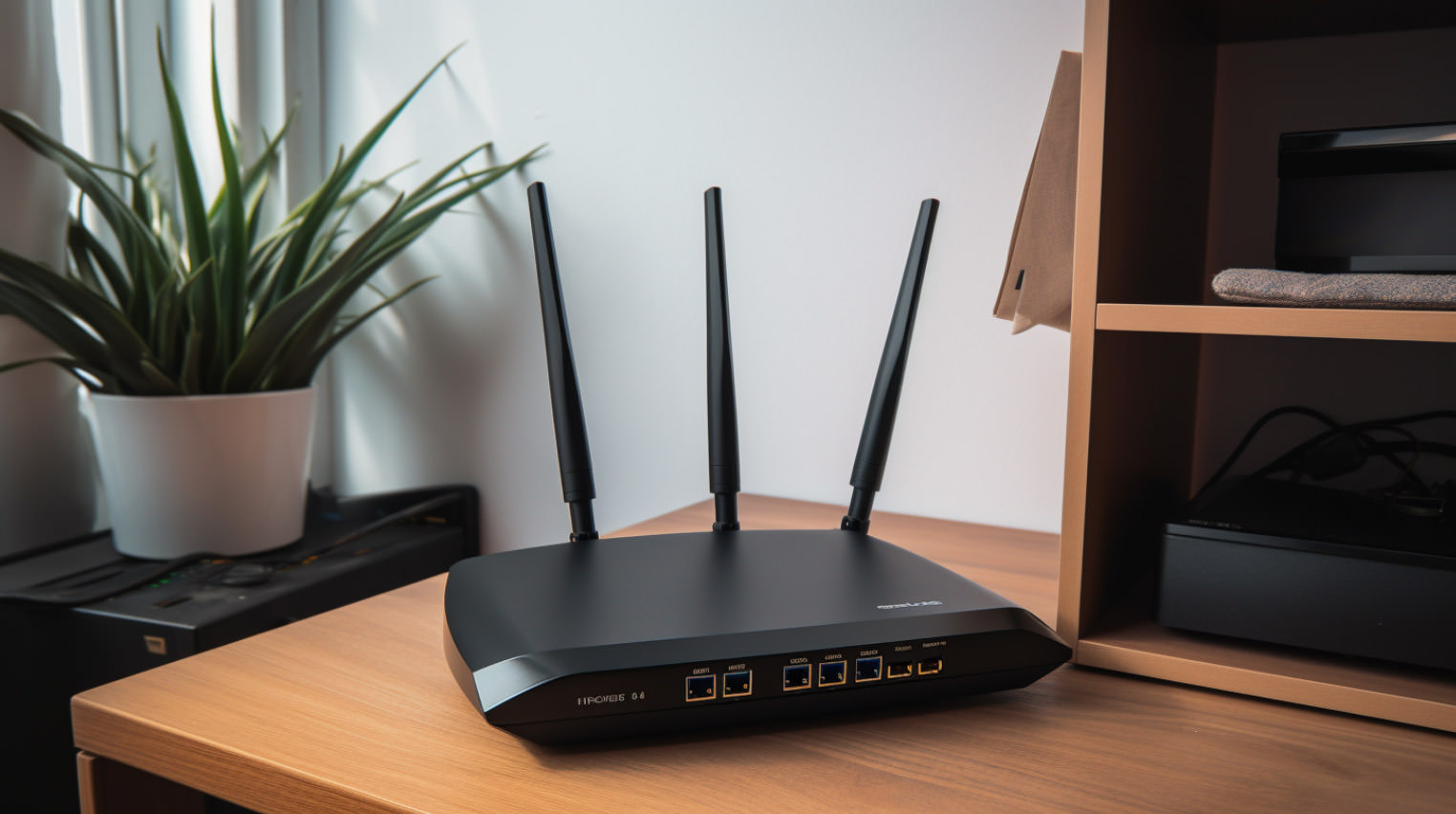
Here’s how you can adjust your router’s antennas:
Vertical Position
If your router has one antenna, it should be positioned vertically. This will spread the signal horizontally around your home, which is ideal if your devices are located on the same floor as the router.
Multiple Antennas
If your router has two antennas, positioning them perpendicularly (one vertical and one horizontal) can help cover a wider area. This is because some devices receive signal better horizontally, while others receive it better vertically.
Directional Antennas
If your router has directional antennas, you can point them in the direction where you need the most coverage. For example, if your router is located at one end of your house and your devices are at the other end, you could point the antennas towards your devices.
Remember, every home is different, so you might need to experiment with different positions to find what works best for your specific situation. Also, keep in mind that while adjusting the antennas can help, it won’t solve larger issues like a router that’s too old or an internet plan that’s too slow.